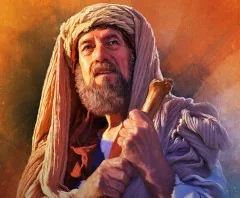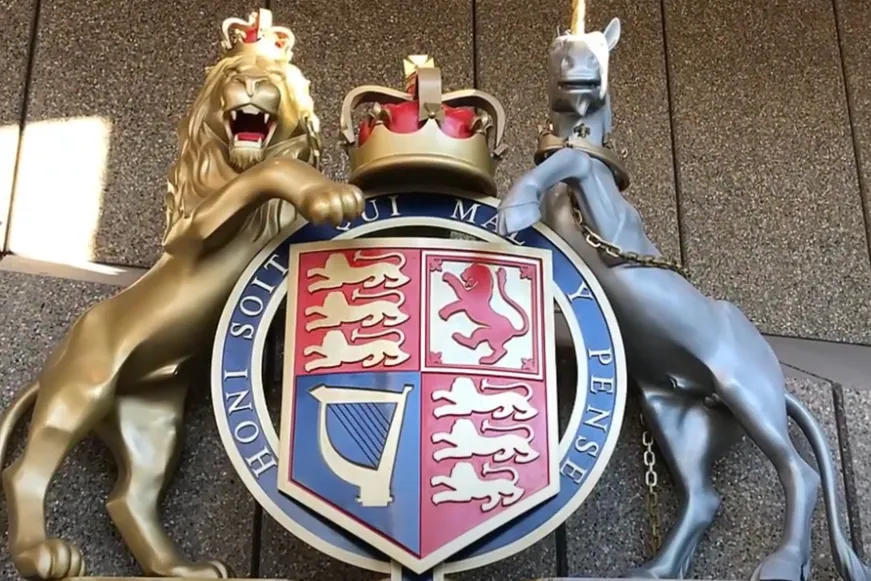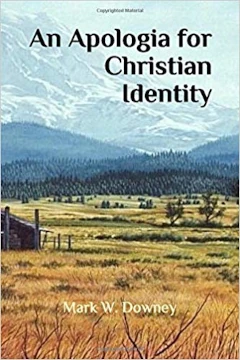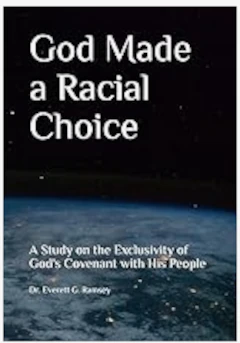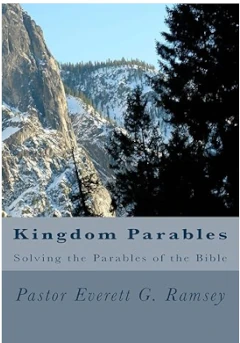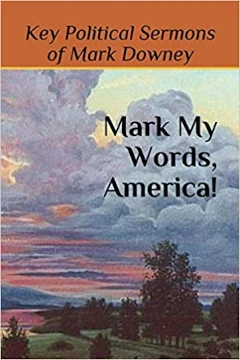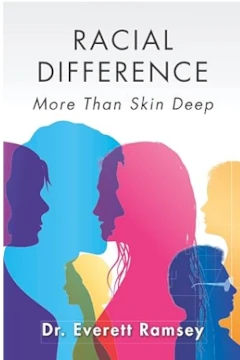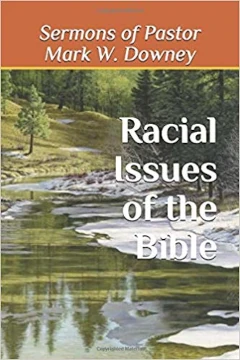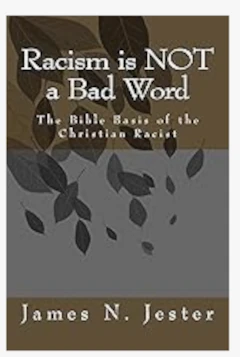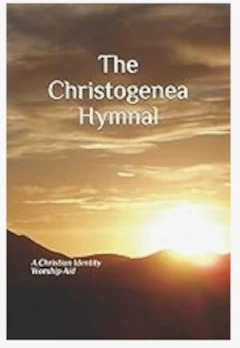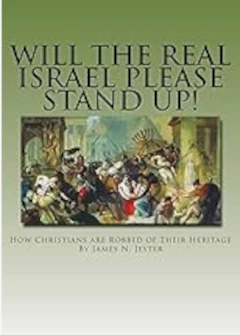R U Woke? Part 12
Ruth
Sermon notes by Pastor Jim Jester
July 24, 2020
SCRIPTURE READING: Ruth 1:1-5, ISV
Now there came a time of famine while judges were ruling in the land of Israel. A man from Bethlehem of Judah, his wife, and his two sons left to live in the country of Moab. 2 The man’s name was Elimelech, his wife’s name was Naomi, and their two sons were named Mahlon and Chilion—Ephrathites from Bethlehem of Judah. They journeyed to the country of Moab and lived there for some time. 3 Then Naomi's husband Elimelech died, and she was left with her two sons. 4 Each of her sons married Moabite women: one named Orpah and the other named Ruth. After they lived there about ten years, 5 both Mahlon and Chilion died, leaving Naomi alone with neither her husband nor her two sons.
INTRODUCTION
Our Scripture reading sets the stage for the story of Ruth. “…Ephrathites of Bethlehem, Judah.” (v. 2). Ephrath was an earlier name for Bethlehem, where Christ our Lord was born. Thus already, the type, or symbol, for a kinsman redeemer is already being formed.
Was Ruth a Moabitess racially, or was she called such because she lived in Moab? The universalists of Christianity want to destroy all racial significance of the Bible, and probably their most favorite example to do so is Ruth. They love to misquote this verse, much as they do John 3:16 in the New Testament:
And Ruth said [to Naomi], ‘Intreat me not to leave thee, or to return from following after thee: for whither thou goest, I will go; and where thou lodgest, I will lodge: thy people shall be my people, and thy God my God.’ (Ruth 1:16)
Universalists assert that God’s covenant is not limited to national, political or racial boundaries; and they point to Ruth, the Moabitess, as the broken link in the chain from Adam to Christ. Of course, we flatly disagree. They also fail to understand that the earliest Moabites descended from Lot (nephew of Abram) who was Adamite as surely as was Abraham. Of course, there is no proof of race mixing in the Ruth narrative, as these universalists would like to see. God simply reached outside the Israelite family and used the Adamic purity of Ruth within the line of our Savior.
It is true that the Moabites eventually became mixed, but by the time of Ruth, these were already conquered and driven out; but the country kept its name, “Moab.” Thus, Ruth the Moabitess, is meant for where she lived, not because of her genetic makeup. She was just as good as any pure Israelite.
One commentator had this to say about Ruth:
Ruth never told Naomi “Your God will be my God”, regardless of the claims of the translators. The term “God” is from the Hebrew elohim, and means mighty one/s. It can mean heathen gods as well as our Almighty. Elohim has both a singular and plural meaning. When used with Yahweh (where it is almost always plural in form), it is always singular in spite of what others say to the contrary. It can also be rendered “angels” or “judges”, and Ruth lived during the period of the judges. Ruth, in essence, was saying to Naomi “I will leave the jurisdiction of my judge, and your judge will become my judge.” The only sense in which Ruth was a Moabitess is that she was a Moabitess by geographic area rather than by Moabite genetics. But nearly all of nominal churchianity today use the story of Ruth to promote their perverted ideology of multiculturalism, and in doing so, are guilty of blasphemy against the Holy Spirit, of which our body is the temple. (William Finck)
Thus, we of Christian Identity, believe the issue of Ruth’s genealogy is settled, or she would never have appeared in the line of the Christ; and furthermore, would contradict every other example of racial purity in the Word of God.
MOAB
The Moabites descended from Lot by one of his two daughters, one son named Moab and the other son named Ammon (q.v., Gen. 19:36-38). By the time of the incident of Baalpeor (q.v., Num. 24-25), where the men of Israel were enticed to commit interracial fornication with Moabite women, the Moabites were no longer a racially pure people.
We know that shortly before the Israelites arrived in the Transjordan area, Sihon, a king of the Amorites, had defeated (1450 BC) the previous king of Moab (q.v., Num. 21:26), and absorbed much of the Moabite territory as far south as the river Arnon. It is reasonable to assume that the Moabites mixed with the Amorites, as the women of the conquered became the booty of the conqueror. How many times the Amorites had mixed their genetics would be hard to determine, but the Amorites are one of the Canaanite nations which are named in Genesis 15:19-21. Undoubtedly, the Amorites had even absorbed the genetics of Cain.
During the period of Joshua, the Israelites destroyed the Amorites, who had absorbed the Moabites, killing and/or displacing both of them. Upon driving the Amorites out of the Promised Land, it is recorded in Joshua 18:7, that half of the tribe of Manasseh along with the tribes of Gad and Reuben moved into the former land of Moab east of the Jordan. It was later, during the period of the Judges, that an Israelite lady from the conquered land of Moab, by the name of Ruth, journeyed with her mother-in-law, Naomi, back to Bethlehem.
The territory of the Moabites was originally east and northeast of the Dead Sea. It extended from the Arnon River on the south to the Jabbok River on the north. Then their territory went from the Dead Sea and the Jordan River on the west, across the plains and foothills into the mountains to the east. To the people who lived there, it was called Moab. It kept that name for many centuries after all the Moabites were gone. Moab was a region that had various settlers, especially during the time of famine.
When the Israelites entered the Promised Land, after wandering for 40 years, the land of Moab was the first they conquered. God had commanded them to totally exterminate the occupants of the lands they were to settle, and they did so in Moab.
Then Sihon came out against us, he and all his people, to fight at Jahaz. 33 And the LORD our God delivered him before us; and we smote him, and his sons, and all his people. 34 And we took all his cities at that time, and utterly destroyed the men, and the women, and the little ones, of every city, we left none to remain. (Deut. 2:32-34)
From here, the Israelites advanced northward into the land of Ammon, where Numbers chapter 21 describes it:
And they turned and went up by the way of Bashan: and Og the king of Bashan went out against them, he, and all his people, to the battle at Edrei. 34 And the LORD said unto Moses, Fear him not: for I have delivered him into thy hand, and all his people, and his land; and thou shalt do to him as thou didst unto Sihon king of the Amorites, which dwelt at Heshbon. 35 So they smote him, and his sons, and all his people, until there was none left him alive: and they possessed his land. (Num. 21:33-35)
Thus, these Scriptures reveal that none of the genetic Amorites, nor the Moabites, remained in Moab — the Moabites having already been destroyed previously by the Amorites.
THE KINSMAN REDEEMER
As Boaz was the kinsman redeemer for Ruth, so Jesus Christ is the kinsman Redeemer for Israel. This is key proof that Christian Identity doctrine is correct. Our race is tied to our religion.
One thing that most commentators miss about the Ruth story is this. In Ruth 4:1, we see that there was another kinsman closer to Naomi in blood whose turn it was before Boaz to redeem Ruth; however his personal circumstances forbid him from doing so, and therefore the responsibility fell upon Boaz. Yet this other kinsman underwent great reproach because he could not fulfill the role of a kinsman redeemer. We see in Ruth 4:5-8:
Then said Boaz, What day thou buyest the field of the hand of Naomi, thou must buy it also of Ruth the Moabitess, the wife of the dead, to raise up the name of the dead upon his inheritance. 6 And the kinsman said, I cannot redeem it for myself, lest I mar mine own inheritance: redeem thou my right to thyself; for I cannot redeem it. 7 Now this was the manner in former time in Israel concerning redeeming and concerning changing, for to confirm all things; a man plucked off his shoe, and gave it to his neighbor: and this was a testimony in Israel. 8 Therefore the kinsman said unto Boaz, Buy it for thee. So he drew off his shoe. (Ru. 4:5-8)
To fully understand this symbolic shoe, we must go to Deuteronomy 25:5-10:
If brethren dwell together, and one of them die, and have no child, the wife of the dead shall not marry without unto a stranger: her husband’s brother shall go in unto her, and take her to him to wife, and perform the duty of an husband’s brother unto her. 6 And it shall be, that the firstborn which she beareth shall succeed in the name of his brother which is dead, that his name be not put out of Israel. 7 And if the man like not to take his brother’s wife, then let his brother’s wife go up to the gate unto the elders, and say, My husband’s brother refuseth to raise up unto his brother a name in Israel, he will not perform the duty of my husband’s brother. 8 Then the elders of his city shall call him, and speak unto him: and if he stand to it, and say, I like not to take her; 9 Then shall his brother’s wife come unto him in the presence of the elders, and loose his shoe from off his foot, and spit in his face, and shall answer and say, So shall it be done unto that man that will not build up his brother’s house. 10 And his name shall be called in Israel, ‘The house of him that hath his shoe loosed.’ (Deut. 25:5-10)
So we see that it was a public disgrace for a man to shirk the responsibility of kinsman redeemer. Yet it is wholly evident from Ruth 4:5-8 that these men were operating under the law, and citing the law. This man could have easily avoided such disgrace if Ruth were a Moabitess by race! All he would have had to do was cite Deuteronomy 23:3, “An Ammonite or Moabite shall not enter into the congregation of the LORD; even to their tenth generation shall they not enter into the congregation of the LORD forever.” Clearly, this proves that Ruth was an Israelite, not a racial Moabite!
EXPOSITION OF RUTH (from "What does Kinsman Redeemer Mean by Mark Downey)
For the rest of this sermon (except the last paragraph), I have chosen the late pastor Mark Downey’s main exposition of his study on Ruth.
Let us now examine carefully the most common Bible story relating to the idea of a kinsman redeemer. Turning to the book of Ruth, we discover types and shadows symbolic of things to come — the advent of Christ. Ruth can be considered typically as Israel, a fore-view of the church and prophetically as the bride of Christ. Unfortunately, through jewish influence, the book of Ruth has been adulterated in order to rationalize universalism. What comes into question is Ruth’s racial background. The pulpit pimps of judeo-Christianity push the unbiblical doctrine of the impure genealogy of Jesus Christ. They say that Ruth, one of His ancestors, was racially a Moabitess, a gentile foreigner who tainted the family tree of our Lord and savior and therefore changed all of the covenants and promises God made with Israel. With a mixed blood Jesus, they could redeem non-Israelites. The problem with their presumptions is that they regard Ruth as a non-Israelite because she merely resided in the land of Moab. The Bible does not say that Ruth was a non-Israelite. It just says she was a Moabitess. That could infer Ruth was an Israelite resident of Moab who lived there for awhile, or it could mean she descended from the man Moab, the son of Lot, a relative of Abraham. Moab was the same racial blood as Abraham. Even if Ruth descended from Moab, it wouldn’t automatically make her a non-white, i.e., non-Israelite.
In Deuteronomy 23:3, the Moabites were excluded from the congregation of Israel because, for the most part, they became race mixers. What the judaizers fail to tell the unsuspecting Christian is the history and timeline of this land named after Moab. With typical chutzpah, jewish scholars (sic) try to tell us that the story of Ruth points to a time long after the age of the judges, even though Ruth 1:1 says, “Now it came to pass in the days when the judges ruled.” This is like saying that it is raining when the sun shines. But that’s how the mind of a jew works.
The time of the judges lasted for about 300 years, from around 1400 BC to 1100 BC, from the death of Joshua to Israel’s first king, King Saul. The land of Moab kept that name for many centuries, even after Israel conquered the territory and exterminated the former occupants of the land. After these invasions, the land of Moab was exclusively inhabited by Israelites. This period of time was during the life of Ruth. The preposterous assertions that the book of Ruth was to show how a Moabite woman was cordially welcomed into ancient Israel, and became the ancestress of King David and thus brought her racial stock into the pedigree of the Messiah adds more absurdity to the notion that this story of a racially mixed marriage is told as a protest against the drastic reforms of Ezra and Nehemiah. In their attempt to make all races equal, they must destroy or distort much of the Bible itself.
God excluded the ancient Moabites from entering hallowed ground because they were condemned as was Sodom (Zeph. 2:9) and shall be trampled down for the dunghill (Isa. 25:10). Since King David and the subsequent kings of Judah did enter the congregation of the Lord, it would have been impossible for them to have had any Moabite blood flowing in their veins. It is only logical that Ruth could not have been a Moabite racially. It is pure rubbish to say then, that Jesus was part Moabite because of Ruth. How dare anyone question God violating His own law!
Ruth 1:1 says, “there was a famine in the land [of Judah].” If Elimelech and his wife Naomi and two sons left Bethlehem to live on the other side of the Jordan river, why isn’t it possible that Ruth and her family did the same thing? It’s rather far fetched to suggest that only four people fled from the famine of Judah. If the same race of Moabites were in the land, the same people of whom Balaam tried to curse Israel and destroy, does it make any sense at all, that a century later they would welcome their enemy Israel to live with them and spare them from starvation? Of course they could not because the Moabites did not live in the land of Moab at that time.
So let us not have any doubt about Ruth’s racial background. She was a pure blooded Israelite and hence, so was Jesus Christ. Ehimelech “went to sojourn in the country of Moab.” (Ru. 1:1) Notice the explicit wording. If God wanted to convey the idea of integration, it should have read that “they went to sojourn amongst the people of Moab.” They moved to the geographical area called Moab where there was not one racial Moabite to be found, because the land was now Israelite territory. Ruth could not have been of any other race or nation, but Israel, for no other race lived there. The truth of Ruth must be emphatically stressed, otherwise Israel could not have been redeemed by Jesus Christ. The point being, that the nearest of kin is the only one qualified to be a kinsman redeemer. If Christ was not the ‘nearest of kin,’ if He were a half-breed mongrel bastard as the jewish talmud promulgates, if He were not racially White, then He would be ineligible from being Israel’s redeemer. Since Christ did redeem Israel, He must have been the ‘nearest of kin.’
In Ruth 1:15 of the jewish manipulated Masoretic text of the KJV and others, it reads that Orpah returned to her people and unto her “gods.” The proper rendering should be “God,” a singular pronoun meaning the Almighty Creator of Israel, not a plurality of alien deities. Such nonsense would not have been permitted during this era of judges. See how the jew tinkers with Scripture?
CHRISTIAN ROMANCE
The second chapter of Ruth is the beginning of her romance with Boaz, who is a near kin of Ruth’s mother-in-law, Naomi. Verse 20 exclaims that, “the man is near of kin unto us, he can restore us.” If Ruth was of another race, then Naomi would not have included her as being related by race. The false interpretation from this chapter comes from the word ‘stranger’ in verse 10. It does not prove Ruth was of an alien race. The Hebrew word for ‘stranger’ is nokriy (#5237) which has a variety of generalized definitions, one of which is adulterous. However, there is no indication whatsoever that Ruth was such. No, she was a stranger in the sense of a foreigner coming from another country.
Ruth must have been a very beautiful White woman whom Boaz informed the local field workers that she should receive special treatment. To think that these local Israelites were xenophobic or hostile to Ruth as some judeo-Christian writers suggest is without credibility. They were probably intrigued with her being a new member of the community and her same-race countenance coming from a distant land. The hospitality was no doubt voluntary as Boaz told some of the boys not to get too friendly. Boaz is definitely infatuated with Ruth, giving her every courtesy, which would hardly be given to a non-Israelite.
God's law of welfare in an agrarian society was gleaning after the reapers; found in Deut. 24:19, where the command says, “it shall be for the stranger, the fatherless and widows.” Here, the Hebrew word for ‘stranger’ is geyr (#1616) and means a guest or a traveling Israelite from another country. The reapers gladly observed the law with their new guest in town. This was not just an old custom to be regarded cavalierly, it was from God. As such, the law forbidding mixed race marriage, which is one of the Ten Commandments, that is, thou shalt not commit adultery (miscegenation), would most certainly be in the mind of Boaz. People have a hard time digesting this because today we don’t have a biblical ‘law of the land.’ But once upon a time, there were no other laws or gods in competition with God and His Law.
In chapter 3, Ruth is the type of believing Christian who faithfully enters a rest. Naomi is a type symbolizing the Holy Spirit who guides us to our destiny. Boaz is a type of Christ symbolizing the Kinsman Redeemer. Christ is our rest, our destiny. “There remains a rest to the people of God.” (Heb. 4:9) In the dark of the night, Ruth and Boaz are at rest and he proposes the vows of a kinsman redeemer. He refers to her innate kindness and says, “I will do to thee all that thou requires, for all the people know you are a virtuous woman . . . it is true that I am thy near kinsman.” (v. 11-12) This is a strong parallel to the marriage of the Lamb, between Christ and His bride, Israel, who “hath made herself ready.” (Rev. 19:7)
In the fourth and last chapter, Boaz redeems Ruth by purchasing the estate of Naomi and before witnesses at the Gate, took Ruth to wife and to perpetuate the name of the dead. The community congratulated them with racial overtones expressing best wishes for an Israelitish progeny, mentioning Rachel and Leah as models for proliferating our seed-line. Their society was not pluralistic and they hardly would have been so friendly if it had been a blatantly illicit liaison, especially in bringing forth a half-breed offspring to inherit a sizable amount of land. But the consummation of this marriage and the birth of Obed was a happy ending to this story. No matter how some may try to spoil it with innuendo and lies — that God ordained a violation of His divine law.
“And Obed begat Jesse, and Jesse begat David.” (Ru. 4:22) Both Mary and Joseph were descendants of King David. Why would the genealogy of Jesus be pure except for one case (according to the liberal minister)? Why the charade? If God wanted tainted blood in the process, why keep and preserve a pristine family tree only to be corrupted? Why would God incorporate into the Israelite gene pool, leading through the royal line of David to Christ, a bloodline (Moab) whom he condemned? Why would God impute “the possession of nettles, salt pits and a perpetual desolation” (Zeph. 2:9) to Moab and then mix their blood with Israel whom God gave possession of the promised land, being the salt of the earth and enjoying a perpetual covenant with God? Why?
CONCLUSION
Just as Boaz redeemed Ruth, we have been redeemed also; not with gold or silver, but with the precious blood of Christ (q.v. I Pet. 1:18-19). Of course we know now that Christ could not be a lawful redeemer for His people Israel if He wasn’t their kin by blood. In Hebrew culture, the nearest male blood relative could act as the kinsman redeemer, but he must be related. Some White people might be asking how are we related to Jesus Christ? The New Testament establishes the fact that we are the children of God (Rom. 8:16); and our motivations or spirit is the same as the Spirit of God. Jesus said, “I was not sent except to the lost sheep of the house of Israel” (Mt. 15:24); and “My sheep hear My voice and I know them, and they follow Me.” (Jn. 10:27) Since Jesus Christ is the Son of God and we are also the sons of God, we become joint-heirs with Christ by virtue of our adoption (q.v., Rom. 8:15, 17). Jesus is not only our Savior, but our brother, our kinsman redeemer, our closest male blood relative. Romans 8:23 speaks of the “adoption, to wit, the redemption of our body” whereby we shall be changed into a glorified body as was Jesus after His resurrection. Adam lost his inheritance and immortality because of sin; and so the entire Adamic race was sold into bondage. Therefore, we need to be delivered from the curse of death.
To ignore the biblical narrative is to ignore the fact that our race disobeyed God at a great price. As long as a sinner or sinful nation owes a debt, he is under the law. When the debt is paid, he is then under grace. The price Israel suffered for whoring after alien gods was God’s divorce of her. Jesus Christ then came 2000 years ago, as the Kinsman Redeemer to purchase back His wife, the bride of Christ, so that they were once again the rightful heirs of the promises. Jesus paid the full price for both Israel’s and Adam’s sin. He purchased all that was lost with His own blood (Acts 20:28). “In the body of His flesh, through His death, to present you holy and blameless and without charges before our Father in heaven.” (Col. 1:22) “And because of this, He is the Mediator of the New Covenant, so that His death, for the redemption of our transgressions that were under the first covenant, we have been called to receive the promise of eternal inheritance.” (Heb. 9:15) [End of Downey quote] What Does Kinsman Redeemer Mean? by Pastor Mark Downey
Thus, the book of Ruth is significant in understanding the racial context of the Bible. It is imperative that the judeo-Christian world (and all such universalists) sees this truth or they will never begin to destroy the plague of Critical Race Theory and Wokeism.

